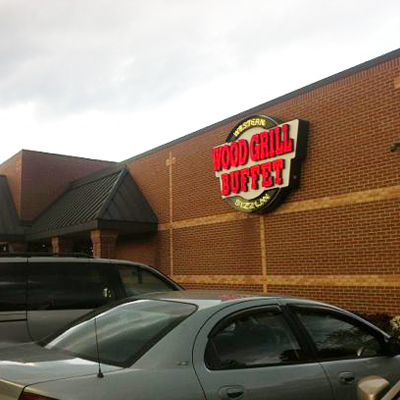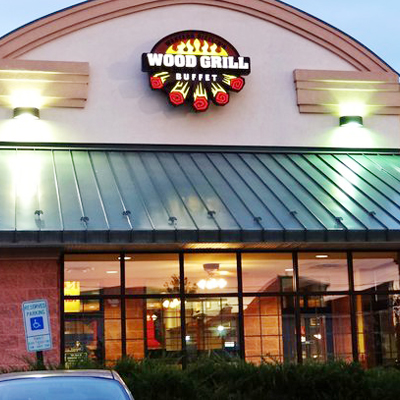When we think of casinos, the thrill of slot machines and poker tables often comes to mind, but let’s not overlook the culinary experience that’s become just as iconic—the casino buffet. Over the years, these sprawling feasts have evolved from simple offerings to extravagant spreads that attract food lovers and gamblers alike. Interestingly, much like buffets bring people together over food, online gaming connects players across the globe, creating a shared experience that transcends physical boundaries. How did buffets become such a vital part of the casino experience?
It’s fascinating to see how dining transformed from a mere convenience for gamblers to a strategy for keeping guests entertained and satisfied. Buffets didn’t just fill stomachs; they became a symbol of indulgence and value, drawing visitors from all walks of life. As casinos grew into entertainment hubs, so did their dining options, making the buffet a staple in gambling culture. Let’s explore how this evolution reshaped the way we experience casinos today.
The History Of Casino Dining
Early Days Of Casino Eateries
Casino dining initially focused on functionality, offering simple, inexpensive meals like sandwiches and coffee to keep players on-site and returning to gaming floors quickly. Ritzo Casino modernizes this approach by integrating dining perks into their bonus offerings, such as exclusive discounts, complimentary meals, or dining credits. This strategy blends convenience with indulgence, elevating the dining experience while encouraging longer, more enjoyable stays for players.
Transition To Larger Dining Areas
By the mid-20th century, casinos began incorporating more spacious dining areas as part of their visitor experience. This shift came with the rise of integrated resorts, which emphasized broader entertainment. Restaurants with diverse menus supplemented gaming activities, appealing to a wider clientele that included families and non-gamblers. Dining spaces became more central to casino layouts, reflecting their enhanced role in revenue generation.
The Rise Of The Casino Buffet
Casino buffets first appeared in Las Vegas in 1946 with the introduction of the “Buckaroo Buffet” at the El Rancho Vegas. This dining concept, created by Beldon Katleman, offered affordable food options to keep gamblers on-site during late-night hours. With cold cuts and a few hot dishes priced at $1, it quickly captured the attention of casino-goers.
The Beginnings Of All-You-Can-Eat Concepts
The success of the Buckaroo Buffet marked the start of the all-you-can-eat trend, which soon spread to other casinos. By the 1970s, casino buffets had become a staple, offering larger menus and more options. In 1993, the Rio Las Vegas launched the Carnival World Buffet, featuring over 200 dishes. This innovation defined the “super buffet” trend, where variety and indulgence became the main attractions.
Impact On Casino Popularity And Revenue
Buffets served as loss leaders, strategically designed to retain gamblers and increase spending within casinos. The affordability and abundance of food attracted a wide range of visitors, bolstering customer satisfaction and loyalty. This dual purpose of dining and gambling not only enhanced the guest experience but also significantly boosted casino revenues.
Key Features Of Modern Casino Buffets
Casino buffets have evolved from functional food options to luxurious dining experiences. Today, they focus on variety, presentation, and overall quality to cater to diverse tastes and preferences.
Variety Of Cuisine Options
Modern buffets offer global culinary diversity, catering to every palate. Dishes include staples like American comfort foods, rich Italian pastas, and fresh seafood alongside Mexican, Chinese, and Japanese specialties. Many feature carved meats, artisanal desserts, and vegetarian options to appeal to broader audiences. These expansive selections have become a defining characteristic, creating dining experiences as varied as the casinos themselves.
Luxury And Presentation In Buffet Design
Opulent design and elegant presentation define today’s casino buffets. High-end locations showcase polished interiors with premium materials, such as marble counters and custom lighting. Food stations often resemble live kitchens, emphasizing freshness and engagement. Chefs display dishes artfully, from sushi platters to dessert towers, blending style with indulgence. This visual and sensory appeal enhances the allure and reputation of casino dining.
The Role Of Buffets In Enhancing The Casino Experience
Casino buffets have become a hallmark of the gambling experience, blending dining and entertainment to amplify visitor satisfaction. They play a pivotal role in creating a complete and immersive environment where indulgence and convenience meet.
Attracting Different Types Of Patrons
Buffets draw a wide range of guests by offering varied selections that cater to diverse tastes. Family groups, budget-conscious diners, and food enthusiasts are enticed by the all-you-can-eat format featuring global cuisines, fresh seafood, and signature dishes. This inclusivity broadens the casino’s appeal beyond traditional gamblers, encouraging higher foot traffic and prolonged visits.
Creating A Social Hub For Guests
Strategically placed within casinos, buffets foster communal dining in a relaxed space away from game floors. Guests can socialize over shared meals, discuss their wins or strategies, and bask in the spectacle of grand culinary spreads. This dynamic transforms buffets into hubs of interaction that enhance the sense of community and create loyalty-driven experiences.
Challenges And Changes In Casino Buffets
Casino buffets, once symbols of excess, now face mounting challenges as they adapt to modern demands. Rising costs, evolving preferences, and new regulations are reshaping these iconic attractions.
Dealing With Competition And Changing Trends
The proliferation of upscale dining and specialty restaurants in casinos has threatened buffets’ appeal. Many patrons now prefer tailored dining experiences over traditional all-you-can-eat spreads. To remain relevant, buffets emphasize quality over quantity, incorporating premium ingredients and interactive cooking stations. International cuisines and rotating seasonal menus attract sophisticated diners while maintaining their broad appeal.
Adapting To Health And Safety Standards
Tighter health and safety regulations have forced buffets to rethink operations. Open food displays, once central to their charm, now pose challenges under stricter hygiene requirements. Buffets use individually portioned dishes and hands-free serving stations to assure compliance. Enhanced cleaning protocols and visible staff training programs reassure guests, keeping safety a top priority without compromising the dining experience.
Conclusion
Casino buffets have come a long way from their humble beginnings, evolving into iconic dining experiences that blend indulgence with entertainment. They’ve become more than just a meal—they’re a vital part of the casino culture, catering to diverse tastes and creating memorable moments for guests.
As consumer preferences and industry trends continue to shift, buffets remain a testament to the adaptability and innovation of casinos. By embracing quality, variety, and safety, they ensure their place as a cherished staple in the ever-changing world of casino dining.





